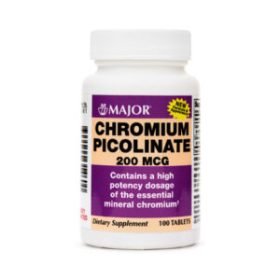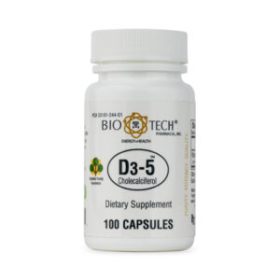This product is available solely through our 503A Compounding Pharmacy, ensuring personalized care and precision in every order. Please note that a valid prescription is required for purchase. If you do not have an account, please contact us.
Rapamycin (Sirolimus) Capsule (Each)
Rapamycin (Sirolimus) Capsules are a prescription medication used to support immune system regulation and prevent organ transplant rejection. Originally derived from soil bacteria, Rapamycin has been extensively studied for its ability to modulate immune responses and reduce inflammation. It is often prescribed in specific medical conditions where controlling excessive immune activity is necessary. Beyond its established uses, research is exploring its potential benefits in areas such as healthy aging and metabolic regulation, though it should only be used under medical supervision.
Rapamycin works by inhibiting a protein called mTOR (mammalian target of rapamycin), which plays a critical role in cell growth, metabolism, and immune system function. By blocking mTOR, Rapamycin suppresses the overactivation of immune cells that could lead to organ rejection or inflammatory diseases. It also influences cellular pathways involved in energy metabolism and tissue repair, helping to regulate immune responses and maintain cellular balance. This targeted action helps prevent unwanted immune reactions while supporting controlled healing processes.
Rapamycin should not be used by individuals with known hypersensitivity to Sirolimus or any of its components. It is also contraindicated in patients with uncontrolled infections, liver disease, or compromised bone marrow function. Due to its immune-suppressing effects, it may increase the risk of infections, and users should avoid exposure to contagious illnesses. Regular blood tests are recommended to monitor kidney and liver function while on this medication. Before starting Rapamycin, inform your healthcare provider about any current medications, supplements, or medical conditions to avoid potential interactions or complications.
Common side effects of Rapamycin include swelling of the hands or feet, high blood pressure, increased cholesterol levels, and mild gastrointestinal symptoms like nausea or diarrhea. Some individuals may experience fatigue, headache, or skin rashes. More serious reactions, such as severe infections, lung issues, or liver problems, are possible and require immediate medical attention. Long-term use may increase the risk of malignancies or other immune-related complications, so careful monitoring by a healthcare provider is essential throughout treatment.
Rapamycin is not recommended during pregnancy or breastfeeding unless explicitly approved by a healthcare provider. The medication may affect fetal development and suppress the immune system, posing potential risks to both mother and child. Women of childbearing age should use effective contraception while on Rapamycin, and breastfeeding should be avoided to prevent the transfer of the drug through breast milk. A healthcare professional can guide safe treatment options and discuss potential risks if Rapamycin therapy is necessary during these sensitive stages.
Store this medication at 68°F to 77°F (20°C to 25°C) and away from heat, moisture and light. Keep all medicine out of the reach of children. Throw away any unused medicine after the beyond use date. Do not flush unused medications or pour down a sink or drain.
- Blagosklonny M. V. (2006). Aging and immortality: quasi-programmed senescence and its pharmacologic inhibition. Cell cycle (Georgetown, Tex.), 5(18), 2087–2102. https://www.tandfonline.com/doi/abs/10.4161/cc.5.18.3288– LinkOpens in New Tab
- Blagosklonny MV. Rapamycin for longevity: opinion article. Aging (Albany NY). 2019 Oct 4;11(19):8048-8067. doi: 10.18632/aging.102355. Epub 2019 Oct 4. PMID: 31586989; PMCID: PMC6814615. https://www.ncbi.nlm.nih.gov/pmc/articles/PMC6814615/– LinkOpens in New Tab
- Zhang, J., & Chung, T. (2010). Old drug, new use: sirolimus in dermatology. International journal of dermatology, 49(8), 947-953.
- Li, Y., Li, J., & Li, S. (2019). Pharmacokinetics and metabolism of sirolimus. Clinical and experimental pharmacology & physiology, 46(2), 96-107.
- Pfizer Inc. (2019). Rapamune (sirolimus) prescribing information. Retrieved from https://www.accessdata.fda.gov/drugsatfda_docs/label/2019/021083s046lbl.pdf– LinkOpens in New Tab
- Smit, J. W., & Stokkel, M. P. (2012). Radiopharmaceuticals in the era of targeted therapy: a clinical review. EJNMMI research, 2(1), 50.
- MTOR inhibitors. Drugs.com. (2023, May 15). https://www.drugs.com/drug-class/mtor-inhibitors.html#:~:text=What%20are%20MTOR%20inhibitors%3F,mTOR%20pathway%20is%20more%20active.– LinkOpens in New Tab
- Martel, R. R., & Klicius, J. (1993). Mechanism of action of rapamycin. Journal of Antibiotics, 46(5), 10.1038/ja.1993.113.
- Pritchard, S., Szydlo, R. M., Apperley, J. F., & Carreras, E. (Eds.). (2012). The EBMT Handbook: Hematopoietic Stem Cell Transplantation and Cellular Therapies. Springer Science & Business Media.
- National Institutes of Health. (2022). Sirolimus. Retrieved from https://livertox.nlm.nih.gov/Sirolimus.htm– LinkOpens in New Tab
- Davis, M., Williams, G., & Harrison, B. (2014). Sirolimus-associated delayed wound healing: a case report and review of literature. The Annals of pharmacotherapy, 48(3), 393-397.
- Drugs and Lactation Database (LactMed) – Sirolimus. U.S. National Library of Medicine. (2022). Retrieved from https://www.ncbi.nlm.nih.gov/books/NBK501447/– LinkOpens in New Tab
- Briggs, G. G., Freeman, R. K., & Yaffe, S. J. (Eds.). (2017). Drugs in pregnancy and lactation: a reference guide to fetal and neonatal risk. Wolters Kluwer. Pfizer Inc. (2019).
- Rapamune (sirolimus) prescribing information. Retrieved from https://www.accessdata.fda.gov/drugsatfda_docs/label/2019/021083s046lbl.pdf– LinkOpens in New Tab
- Hale, T. W., & Rowe, H. E. (2019). Medications and Mothers’ Milk. Springer Publishing Company.
- Micromedex Solutions. (2022). Sirolimus. Retrieved from https://www.micromedexsolutions.com/home/dispatch/– LinkOpens in New Tab
- Lexicomp Online. (2022). Sirolimus. Retrieved from https://online.lexi.com/action/login– LinkOpens in New Tab
- Drugs.com. (2022). Sirolimus Side Effects. Retrieved from https://www.drugs.com/sfx/sirolimus-side-effects.html





